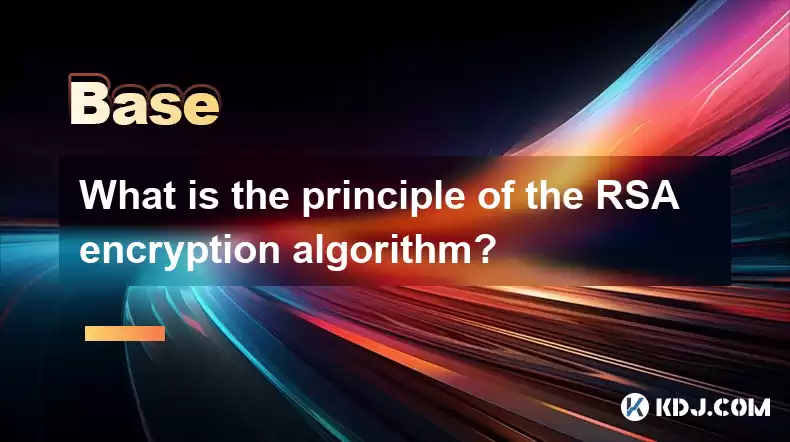-
 Bitcoin
Bitcoin $115100
1.27% -
 Ethereum
Ethereum $3675
2.71% -
 XRP
XRP $2.995
1.45% -
 Tether USDt
Tether USDt $1.000
0.02% -
 BNB
BNB $769.8
2.64% -
 Solana
Solana $168.0
3.25% -
 USDC
USDC $0.9999
-0.01% -
 TRON
TRON $0.3371
1.48% -
 Dogecoin
Dogecoin $0.2051
3.36% -
 Cardano
Cardano $0.7394
2.30% -
 Hyperliquid
Hyperliquid $38.15
0.42% -
 Stellar
Stellar $0.3966
-0.36% -
 Sui
Sui $3.486
2.93% -
 Chainlink
Chainlink $16.72
2.52% -
 Bitcoin Cash
Bitcoin Cash $568.0
4.36% -
 Hedera
Hedera $0.2440
2.59% -
 Ethena USDe
Ethena USDe $1.001
0.04% -
 Avalanche
Avalanche $22.16
2.06% -
 Litecoin
Litecoin $119.1
-0.73% -
 UNUS SED LEO
UNUS SED LEO $8.991
0.04% -
 Toncoin
Toncoin $3.232
-0.39% -
 Shiba Inu
Shiba Inu $0.00001233
2.82% -
 Uniswap
Uniswap $9.717
2.53% -
 Polkadot
Polkadot $3.664
1.85% -
 Dai
Dai $1.000
0.01% -
 Monero
Monero $281.2
-3.89% -
 Bitget Token
Bitget Token $4.350
1.55% -
 Cronos
Cronos $0.1428
5.07% -
 Pepe
Pepe $0.00001050
3.68% -
 Aave
Aave $262.3
3.54%
What is the principle of the RSA encryption algorithm?
RSA's security rests on the difficulty of factoring large numbers; it uses asymmetric encryption with public and private keys for encryption and decryption, respectively, leveraging modular exponentiation for its processes.
Mar 06, 2025 at 06:18 am

Key Points:
- The RSA algorithm relies on the mathematical properties of prime numbers and modular arithmetic.
- It uses a public key for encryption and a private key for decryption, ensuring asymmetric encryption.
- The security of RSA hinges on the difficulty of factoring large numbers into their prime components.
- Key generation involves selecting large prime numbers, calculating the modulus, and determining the public and private exponents.
- Encryption and decryption processes utilize modular exponentiation.
What is the principle of the RSA encryption algorithm?
The RSA algorithm, named after its inventors Rivest, Shamir, and Adleman, is a widely used public-key cryptosystem. Its security is based on the practical difficulty of factoring the product of two large prime numbers. This asymmetry—the ease of multiplication versus the difficulty of factorization—is the cornerstone of its functionality. The algorithm employs a public key for encryption and a private key for decryption, a critical feature for secure communication in the cryptocurrency world.
How does RSA key generation work?
The process of generating an RSA key pair involves several steps:
- Choose two distinct prime numbers, p and q. These numbers should be very large, typically hundreds or even thousands of bits long, to ensure sufficient security against factorization attacks. The larger the primes, the more computationally expensive it is to break the encryption.
- Compute n = p q. This value n* is the modulus and forms a crucial part of both the public and private keys. It is a composite number, the product of two large primes.
- Compute φ(n) = (p-1)(q-1). This is Euler's totient function, representing the number of positive integers less than n that are relatively prime to n. This value is essential for calculating the exponents.
- Choose an integer e such that 1 < e < φ(n), and gcd(e, φ(n)) = 1. This is the public exponent. It must be relatively prime to φ(n), meaning their greatest common divisor is 1. This ensures the existence of a multiplicative inverse.
- Compute d such that d e ≡ 1 (mod φ(n)). This is the private exponent, and it's the multiplicative inverse of e modulo φ(n). This calculation typically uses the Extended Euclidean Algorithm.
The public key consists of the pair (n, e), while the private key is (n, d). The value n is shared between both keys.
How does RSA encryption work?
To encrypt a message M (represented as a number) using the public key (n, e):
- Calculate C ≡ Me (mod n). This is the ciphertext C. The modular exponentiation ensures the result remains within the range of 0 to n-1. This step involves raising the message to the power of the public exponent, modulo n.
How does RSA decryption work?
To decrypt the ciphertext C using the private key (n, d):
- Calculate M ≡ Cd (mod n). This recovers the original message M. This step involves raising the ciphertext to the power of the private exponent, modulo n. The mathematical properties of modular arithmetic and Euler's theorem guarantee that this operation recovers the original message.
Why is RSA secure?
The security of the RSA algorithm relies heavily on the computational difficulty of factoring large numbers. While theoretically possible to factor n into p and q, the computational resources required for large values of n (hundreds or thousands of bits) are currently beyond the reach of even the most powerful computers. If n could be easily factored, then the private key d could be easily calculated, compromising the security of the system. However, advancements in factorization algorithms and quantum computing pose potential long-term threats.
How is RSA used in cryptocurrencies?
RSA plays a crucial role in various aspects of cryptocurrency security:
- Digital Signatures: RSA is used to generate digital signatures, verifying the authenticity and integrity of transactions. A user signs a transaction using their private key, and others can verify the signature using the public key.
- Secure Communication: RSA can secure communication channels between users and nodes in a cryptocurrency network. This prevents eavesdropping and tampering with sensitive data.
- Key Exchange: RSA can be employed in key exchange protocols, enabling secure establishment of symmetric keys for faster, more efficient encryption of larger amounts of data.
Common Questions and Answers:
Q: What are the limitations of RSA?
A: RSA is computationally expensive, especially for large keys. Its security is also vulnerable to attacks if the key size is too small or if the prime numbers used are not sufficiently random. Quantum computing advancements pose a potential future threat.
Q: Is RSA perfectly secure?
A: No, RSA is not perfectly secure. While currently considered secure for appropriately sized keys, it's susceptible to various attacks if not implemented correctly or if the key size is insufficient. The computational difficulty of factoring large numbers is the basis of its security, but this difficulty is not absolute.
Q: How is the size of the RSA key chosen?
A: The size of the RSA key (the number of bits in n) is chosen based on the desired level of security. Larger key sizes offer greater security but require more computational resources. Currently, key sizes of 2048 bits or greater are generally recommended for robust security.
Q: What is the difference between symmetric and asymmetric encryption?
A: Symmetric encryption uses the same key for both encryption and decryption, while asymmetric encryption uses separate keys (public and private). RSA is an example of asymmetric encryption, offering advantages in key distribution and digital signatures.
Disclaimer:info@kdj.com
The information provided is not trading advice. kdj.com does not assume any responsibility for any investments made based on the information provided in this article. Cryptocurrencies are highly volatile and it is highly recommended that you invest with caution after thorough research!
If you believe that the content used on this website infringes your copyright, please contact us immediately (info@kdj.com) and we will delete it promptly.
- Fireverse Token: Igniting a Musical Revolution in Web3
- 2025-08-07 08:27:45
- Ethereum, L2 Withdrawals, and Decentralization: A New Yorker's Take
- 2025-08-07 08:32:33
- Avalanche vs. Ruvi AI: Daily Sales Tell a Story of Crypto Disruption
- 2025-08-07 06:29:35
- DeSoc: The Crypto to Buy Now for a Decentralized Future (and Maybe 43x Gains!)
- 2025-08-07 06:50:16
- Arctic Pablo Coin: Riding the Meme Coin Wave with a Deflationary Twist
- 2025-08-07 07:18:13
- XRP Price Skyrocket? Decoding the Cryptocurrency's Next Move
- 2025-08-07 07:31:50
Related knowledge

What is the difference between CeFi and DeFi?
Jul 22,2025 at 12:28am
Understanding CeFi and DeFiIn the world of cryptocurrency, CeFi (Centralized Finance) and DeFi (Decentralized Finance) represent two distinct financia...

How to qualify for potential crypto airdrops?
Jul 23,2025 at 06:49am
Understanding What Crypto Airdrops AreCrypto airdrops refer to the distribution of free tokens or coins to a large number of wallet addresses, often u...

What is a crypto "airdrop farmer"?
Jul 24,2025 at 10:22pm
Understanding the Role of a Crypto 'Airdrop Farmer'A crypto 'airdrop farmer' refers to an individual who actively participates in cryptocurrency airdr...

What is the difference between a sidechain and a Layer 2?
Jul 20,2025 at 11:35pm
Understanding the Concept of SidechainsA sidechain is a separate blockchain that runs parallel to the main blockchain, typically the mainnet of a cryp...

What is the Inter-Blockchain Communication Protocol (IBC)?
Jul 19,2025 at 10:43am
Understanding the Inter-Blockchain Communication Protocol (IBC)The Inter-Blockchain Communication Protocol (IBC) is a cross-chain communication protoc...

How does sharding improve scalability?
Jul 20,2025 at 01:21am
Understanding Sharding in BlockchainSharding is a database partitioning technique that is increasingly being adopted in blockchain technology to enhan...

What is the difference between CeFi and DeFi?
Jul 22,2025 at 12:28am
Understanding CeFi and DeFiIn the world of cryptocurrency, CeFi (Centralized Finance) and DeFi (Decentralized Finance) represent two distinct financia...

How to qualify for potential crypto airdrops?
Jul 23,2025 at 06:49am
Understanding What Crypto Airdrops AreCrypto airdrops refer to the distribution of free tokens or coins to a large number of wallet addresses, often u...

What is a crypto "airdrop farmer"?
Jul 24,2025 at 10:22pm
Understanding the Role of a Crypto 'Airdrop Farmer'A crypto 'airdrop farmer' refers to an individual who actively participates in cryptocurrency airdr...

What is the difference between a sidechain and a Layer 2?
Jul 20,2025 at 11:35pm
Understanding the Concept of SidechainsA sidechain is a separate blockchain that runs parallel to the main blockchain, typically the mainnet of a cryp...

What is the Inter-Blockchain Communication Protocol (IBC)?
Jul 19,2025 at 10:43am
Understanding the Inter-Blockchain Communication Protocol (IBC)The Inter-Blockchain Communication Protocol (IBC) is a cross-chain communication protoc...

How does sharding improve scalability?
Jul 20,2025 at 01:21am
Understanding Sharding in BlockchainSharding is a database partitioning technique that is increasingly being adopted in blockchain technology to enhan...
See all articles

























































































